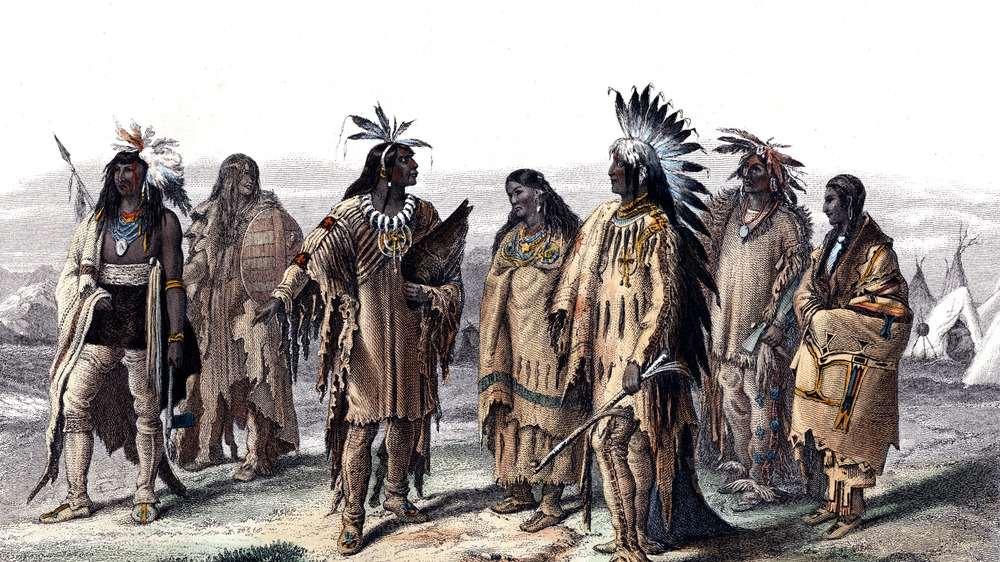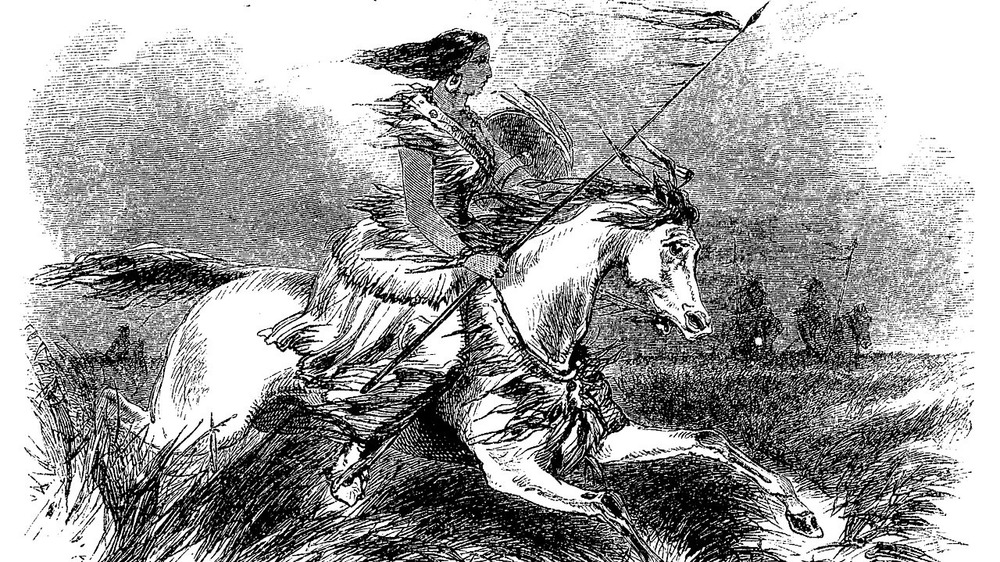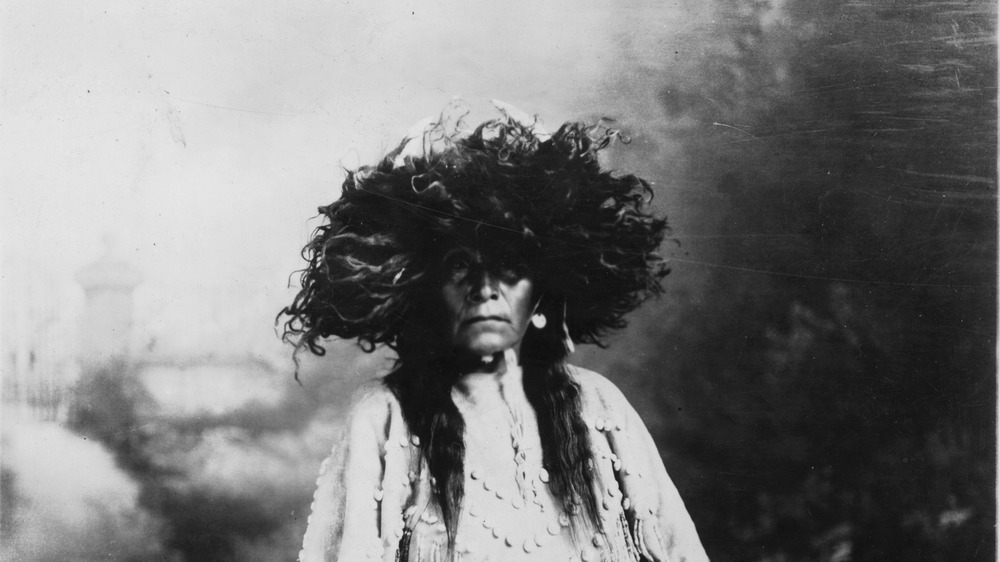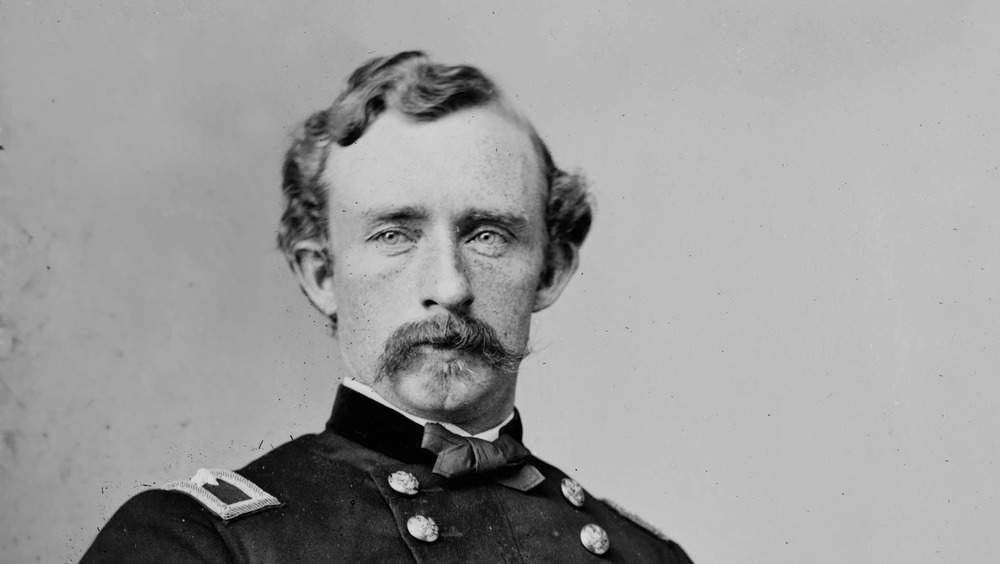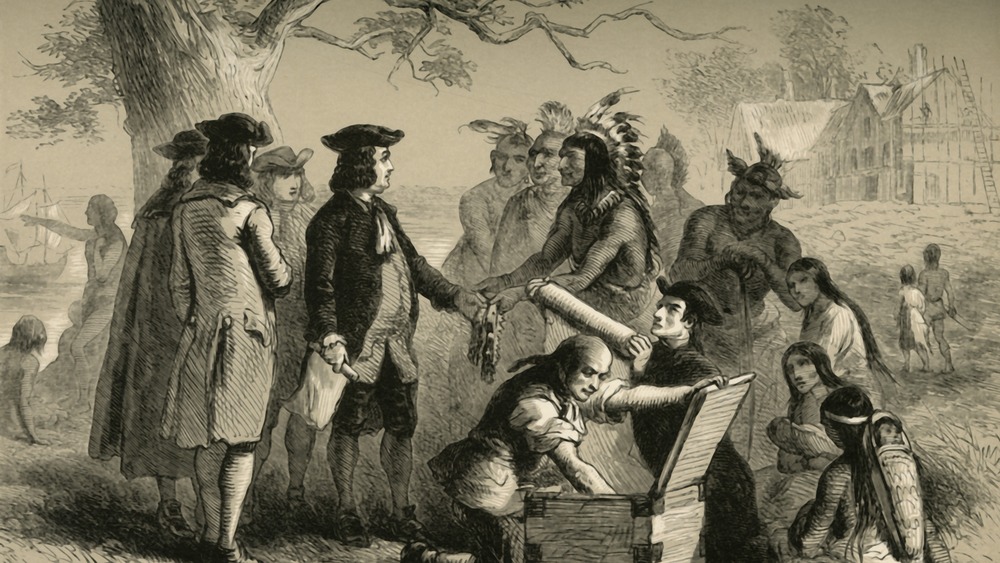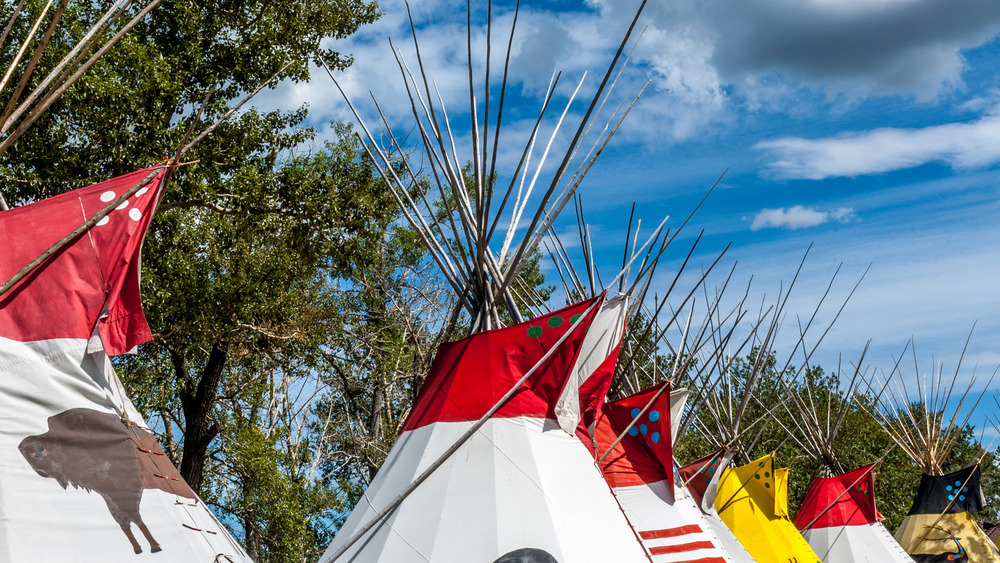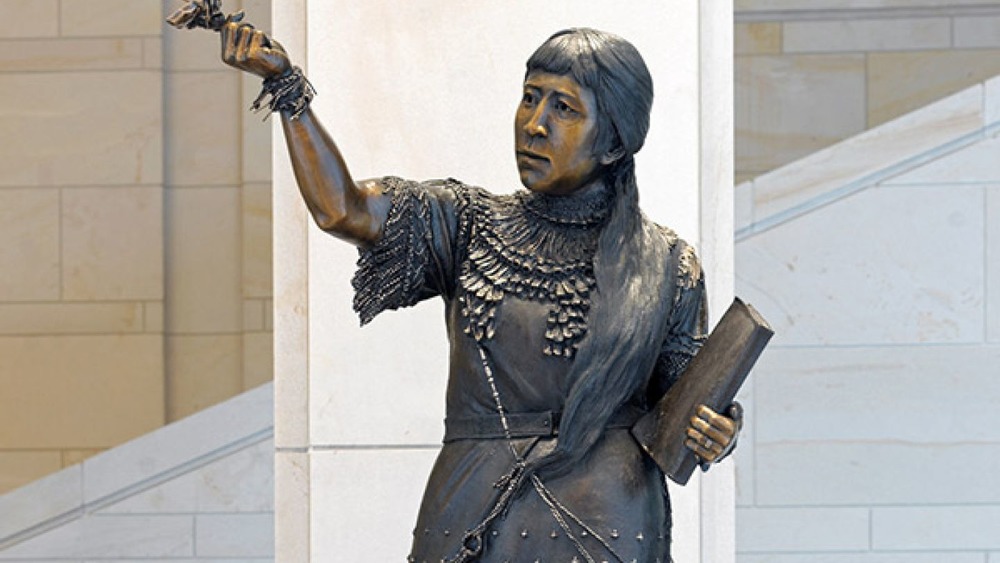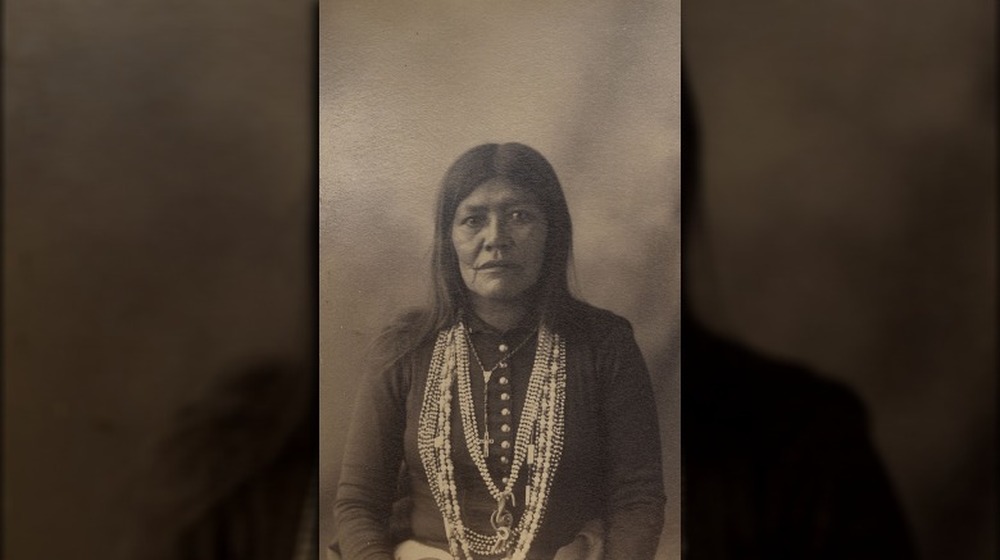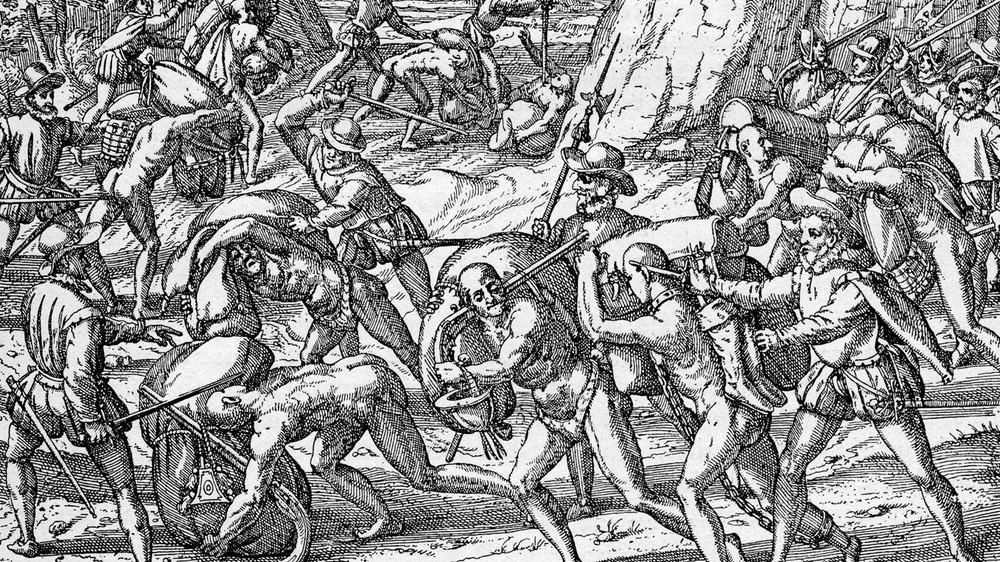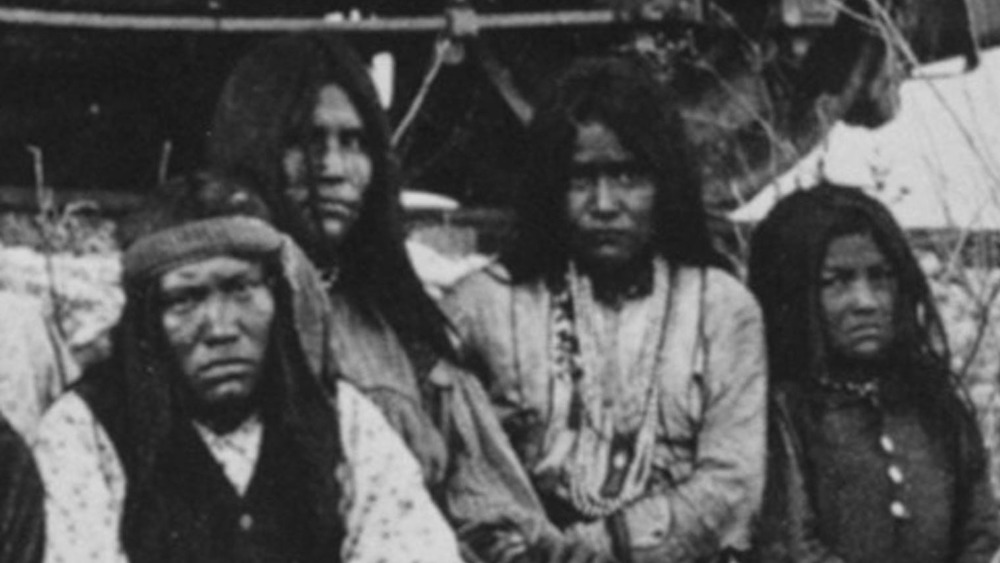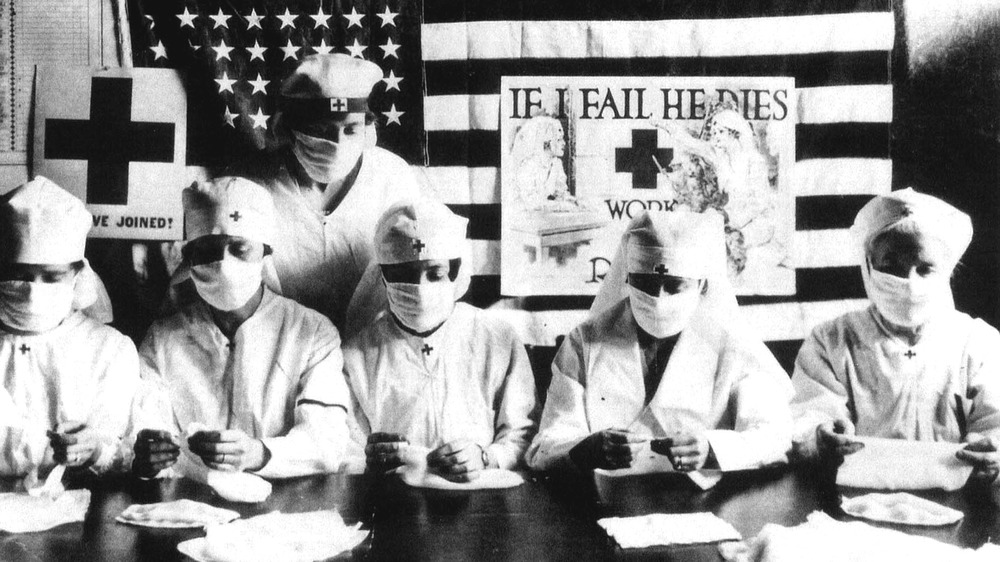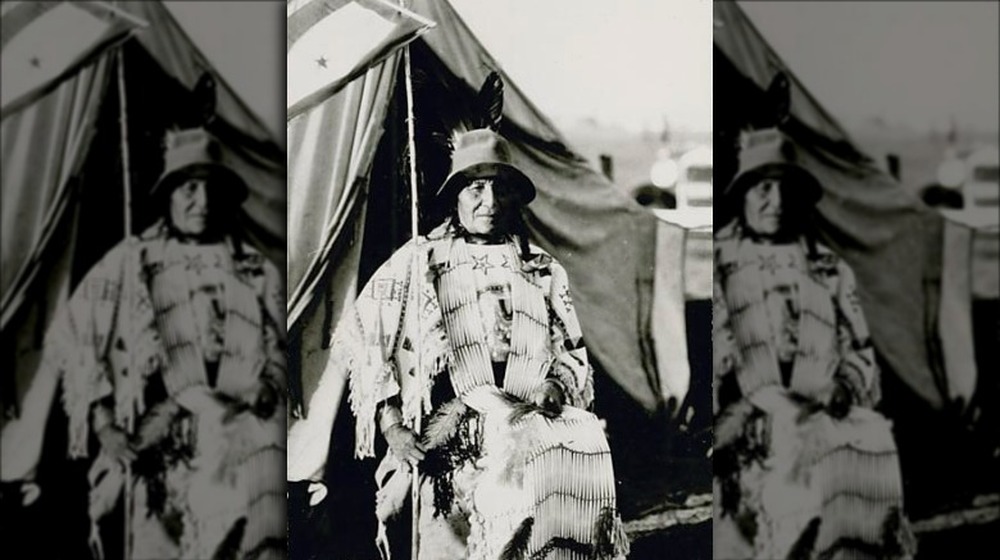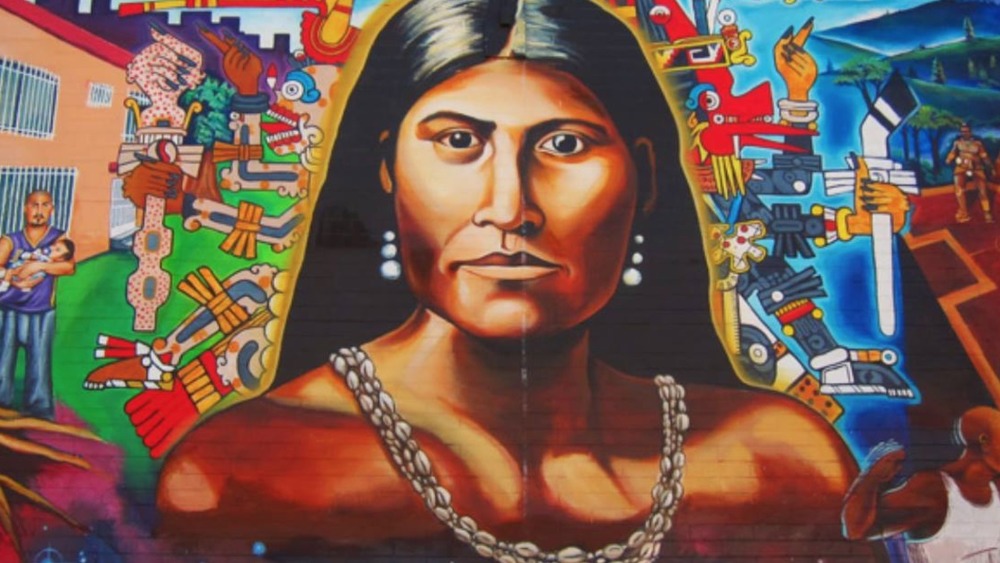The Real-Life Stories Of Native American Warrior Women
"Native American" means many things. There were an extraordinary number of cultures present within the Americas before European contact. And, unfortunately, there are very few historical records remaining today. Before the first European contact of 1492, there were approximately 60 million people living in the Americas. Today, sources such as the Daily Herald tell us that there are 562 Native American tribes within the United States alone. It remains a mystery what happened to these cultures between 1492 and now, for a variety of reasons.
First, because histories were transferred orally, they were particularly disruptive to change. Initiatives such as the Trail of Tears led to widespread upheaval of Native American culture. Displaced Native Americans often had their cultures (and histories) erased and eradicated, and records by outsiders lumped them in together.
To some extent, histories may have been forgotten simply because no one wanted to think about them or talk about them. Historian Bernard Bailyn surmises in Smithsonian Magazine that the truth is just too brutal to be remembered.
But even despite these forgotten histories, there are people who refuse to be forgotten. There are people so monumental, and their actions so momentous, that they are remembered even today.
Pine Leaf of the Crow Tribe
Pine Leaf (also known as Woman Chief or Fallen Leaf) was born in 1806 to the White Clay Tribe. According to Women's History Matters (of the Montana Historical Society), she was taken as a prisoner by the Crow Tribe in 1816, by a father who had lost his son. It was not uncommon for tribal members to "adopt" children in this way.
Though she was only 10 at the time, she was raised with a warrior's skills. And as a warrior, she killed two men in her first battle, capturing a large number of horses. In so doing, she was able to make a name for herself at an early age.
According to Vintage News, Pine Leaf was considered a two-spirit — though she wore female dress, she pursued male interests almost exclusively. She eventually became Woman Chief, and she married four wives, further lending credence to this identity — some female chiefs would take wives while others would take husbands.
Pine Leaf would eventually be killed by the White Clay Tribe in 1854 — the tribe that she was first born into. But she became a somewhat mythical figure, not only as a woman chief but also as both a warrior and negotiator. During her tenure as chief, she was able to broker peace treaties with surrounding tribes — even though her end was a violent one.
Colestah of the Yakama Tribe
Colestah, a wife of Chief Kamiakin, is arguably most famous for fighting by his side, armed with a stone war club, in the Battle of Four Lakes. But, according to the People Pill, she was also a talented medicine woman in her own right and someone with mystical powers.
When Chief Kamiakin was injured in battle, it is believed that she was able to nurse him back to health using her medical knowledge. And, like many medicine woman of that time, she was further believed to be psychic.
Many Native American cultures believe in psychic abilities, but they can be misunderstood. Often, psychic abilities relate to knowledge that is based down from person to person, or the wisdom that a person holds.
While she's often mentioned as one of the most famous warrior women, little is known about Colestah. After she passed in 1865, Chief Kamiakin returned to his ancestral lands, where he died in 1877. Kamiakin had five wives, many of them from different tribes. This may have aided their efforts to maintain peace.
Buffalo Calf Road Woman of the Northern Cheyenne Tribe
According to Amazing Women in History, Buffalo Calf Road Woman was a Cheyenne warrior who became renowned after the Battle of the Rosebud. She is one of the most famous Native American warriors, known for saving her brother during the battle and being the only woman in her tribe to fight in the Battle of Little Bighorn.
In fact, some believe that Buffalo Calf Road Woman may have been instrumental in Gen. George Custer's defeat. According to MentalFloss, the Northern Cheyenne Tribe's oral history recounts that Buffalo Calf Road Woman knocked Custer off his horse, leaving him vulnerable.
According to a Cheyenne elder, they were to keep silent for 100 summers regarding that fateful day — as the tribe feared retribution from the U.S. government. Contemporary accounts of the time not only place Buffalo Calf Road Woman there but observed that she was the only woman there with a gun — a six-shooter.
This is key evidence, as some other people who claim to have killed Custer were not armed with a shooting weapon — and Custer is believed to have been shot down. Either way, she was almost definitely instrumental in the battle.
Nanyehi of the Cherokee Tribe
Nanyehi, "she who walks among the spirits," was a Cherokee woman born in 1738. She fought side-by-side with her husband and, according to the New York Historical Society, later took up his rifle after he died.
According to Teen Vogue, Nanyehi (who was also known as Nancy Ward) was influenced by her uncle, Chief Attakullakulla, to believe that the only way the Native Americans would survive contact with the settlers was to coexist with them. She wanted to find ways to make peace between the people.
When her husband was killed in a battle against Creek Nation, Nanyehi took up his rifle and fought until they were victorious, earning herself the title of Beloved Woman. She was further named the head of the Women's Council and given a place in the Cherokee General Council — the first woman to be given that honor. Nanyehi would eventually marry an Englishman and take his name, consequently being called "Nancy Ward." She would continue to try her best to prevent violence between the Cherokee Tribe and the settlers, once saving a woman from being burned alive and bringing her to her own home.
Toward the end of her life, Nanyehi began to believe that the settlers would continue to take more and more land and pleaded with her people not to give any further land up. But her protests were fruitless, and more land was sold. She eventually died in 1822, living a peaceful life as an innkeeper.
Running Eagle of the Piegan Tribe of the Blackfoot Nation
Running Eagle's story is a compelling one, blending the areas between historical fact and mysticism. When it comes to Running Eagle, there is truth, as well as what is reported to be true.
Running Eagle was also known as Brown Weasel Woman or Pi'tamaka, according to the National Park Service. She was born into the Blackfoot Nation (Piikani) in the 1800s. But she became more interested in male pursuits, such as hunting, than female pursuits. She went on hunts for buffalo and once saved her father's life when they were attacked by enemies.
Ultimately, she became a successful hunter and warrior. After seeing her husband killed by a Crow Tribe member, Native American Roots says that she spoke with the Sun — which told her that she would be a fierce warrior if she never lay with another. The waterfall that she had this vision quest at is now marked. She did, in fact, become a war leader and conducted multiple raids. In one such raid, she was able to capture 600 horses, and though two arrows struck her, they both shot her shield. Eventually, she was killed during a raid on the Flathead Indians.
As the story goes, some believe that she was killed when she broke her promise to the Sun and slept with another man of her party.
Sarah Winnemucca of the Paiute Tribe
During the Bannock War, Sarah Winnemucca served as both scout and messenger. Of the Paiute Tribe, she fought for Native American land rights following the war. When the Paiute were exiled to reservations in which they began to die of diseases, she testified before Congress. According to Online Nevada Encyclopedia, she lectured over 300 times about the injustice her people faced.
Born sometime around 1844, Winnemucca's tribal name was Thocmetony, or "shell flower." She worked as an interpreter for Indian Affairs in 1871 and, while she married twice, she left both marriages. In 1878, she began to work as an interpreter and a scout during the Bannock War — and she was able to save her father by traveling over 200 miles without sleep.
Winnemucca was most notable for straddling the line between her tribal origins and her work with the United States. She was a peacemaker and desired for both sides to come to an agreement. Unfortunately, this didn't ultimately come to pass. Her people were displaced.
In 1883, she wrote Life Among the Piutes: Their Wrongs and Claims, but the Piaute Tribe was not allowed to return back to its land despite Congressional legislation. The plans were never actually enacted.
Dahteste of the Choconen Apache Tribe
New Mexico Nomad remembers Dahteste as both a superb warrior and hunter. She rode with her husband and eventually joined Geronimo's band. She was known for being an aggressive and lethal warrior — but also worked to translate, negotiate, and mediate. Many of the Native American warrior women are remembered for both being warriors and diplomats. Dahteste was part of a group of warrior women who fought together.
In fact, some say that Dahteste and Lozen, another famous Apache warrior woman, were in a relationship together (via Bustle). While they did fight together and were arrested together, there is little to support that they had a romantic relationship. However, they were proven to be close, and an interviewer noted that Dahteste mourned Lozen's death until her own.
Dahteste, like Lozen, is believed to have been two-spirit — she dressed and fought like a man for much of her life. However, it's not known whether she herself thought of herself as two-spirit during her lifetime — a complication of history. Regardless, Dahteste proved herself on the battlefield, fought side-by-side with other women, and survived her encounters with the settlers.
Awashonks of the Sakonnet Tribe
Awashonks was the chief of the Sakonnet people in what is now Rhode Island. Born around 1620 and most active in the 1670s, Awashonks would eventually become one of the signatories of a peace treaty between the local tribes and Plymouth Colony.
It's not known what her real name was. According to Little Compton, "Awashonks" was a granted title that meant "she who is queen." When her husband died in 1660, she became the leader — but it's also believed that she held the title through her strength and wisdom. She would eventually marry two husbands and have three children.
Awashonks participated in the King Philip's war, which is when she appears frequently in records. After the war, she was forced to negotiate with the English and formed an uneasy alliance. It's likely that she pledged loyalty to the English in exchange for her people not being subjected to enslavement, and she specifically negotiated in that direction.
Her people were ultimately displaced, as were many other tribes, and suffered enslavement again.
Lozen of the Chinenne Chiricahua Apache
With the nickname "Apache Joan of Arc," Lozen was known as a feared and fearless leader. She was both a medicine woman and a warrior, rumored to have powers. She traveled with both Geronimo and Dahteste. Before that, she defended her lands with her brother, Victorio — against the U.S. Army.
Before battles, the Apache would often pray for guidance. Lozen had the uncanny ability to use these prayer sessions to tell exactly where the enemy might be. Thus, according to Ancient Origins, she was known to be an excellent strategist. She also excelled at both riding and shooting.
Lozen spent years in skirmishes and raids, eventually falling in with Geronimo until he surrendered in 1885. She was battle sisters with other Apache women, including the famous Dahteste.
Like Dahteste, Lozen is believed by some to have been a two-spirit, says KQED. Regardless, she was known to be a medicine woman who had powerful visions. After repeatedly meeting the U.S. Army in battle, Lozen was taken prisoner. She died of tuberculosis in Alabama.
Annie Dodge Wauneka of the Navajo community
A tribal leader of the Navajo Nation, Annie Dodge Wauneka was a different type of warrior. In 1951, she became the second woman ever elected to the Tribal Council. She spent her time on weekly radio broadcasts to the Navajo Nation about medical techniques such as vaccination. She eventually became the first Native American to get the Presidential Freedom Medal.
According to the National Park Service, Wauneka was born in 1910 to the Cliff Dwelling People of the Navajo Tribe. She started her medical administrations at the age of 8, after surviving the flu. She then married and studied health, becoming an activist for the Navajo Nation.
In 1918, the Spanish Flu tore through the United States. According to the The Washington Post, the Spanish Flu wreaked havoc throughout the already suffering Native American community. And when settlers had first landed in the Americas, approximately 90% of the Native American population had been killed through disease alone.
Thus, Wauneka's calling became to help the Indigenous people learn more about health and public safety.
Moving Robe Woman of the Hunkpapa Sioux Tribe
Moving Robe Woman, of the Hunkpapa Sioux Tribe, was also known as Her Eagle Robe or Mary Crawler. Her Sioux name was Thasina Mani. As a young adult, she witnessed her brother, One Hawk, falling in battle and saw her father, Crawler, preparing to fight. So, she braided her hair and painted her face red, mounting a horse and rode directly into the fray.
According to American Tribes, Moving Robe Woman killed Isaiah Dorman following her brother's death. She was one of the women who fought against Gen. George Custer during the Battle of Little Bighorn, and some even believe she may have been the one who killed him. One warrior claims to have held Custer's arms as she stabbed him in the back — but others say Buffalo Calf Road Woman knocked him down. This is further complicated by the fact that Custer, by reports, was shot.
Little is known of what happened to Moving Robe Woman after these historic battles. But what is known is that she was photographed in her 80s as "Mary Crawler," in a photo held by the Smithsonian Institution (pictured). So, though she may not have played a role in any major battles thereafter, she did live a long and proud life.
Toypurina of the Tongva Tribe
According to Missions California, Toypurina was only 25 when she inspired a revolt against the Spanish. Though many denied their role in the rebellion, Toypurina proudly admitted hers. She famously said to them, "Of course I did it."
A medicine woman of her tribe, Toypurina had become defiant after witnessing Spanish brutality against the natives. At the time, 5,000 of her people lived in what is now the San Gabriel Valley in California. These areas were colonized by the Spanish. Many of the Tongva were left without land and without hunting, as the Spanish took over much of the resources within the area.
Further, many of the native Tongva had been converted into the Spanish faith. Now called Gabrielinos, they were seen as enemies by some — those who were not converted felt these new faithful disrupted the native way of life.
Toypurina took it upon herself to ally eight Tongva villages against the Spanish. They intended to kill the leaders — but they were betrayed and captured. Seventeen of them were whipped in public as a warning. Toypurina, along with other leaders, was held for questioning. She was eventually imprisoned for a year and a half. Today, a 60-foot mural honors her bravery and memory.
